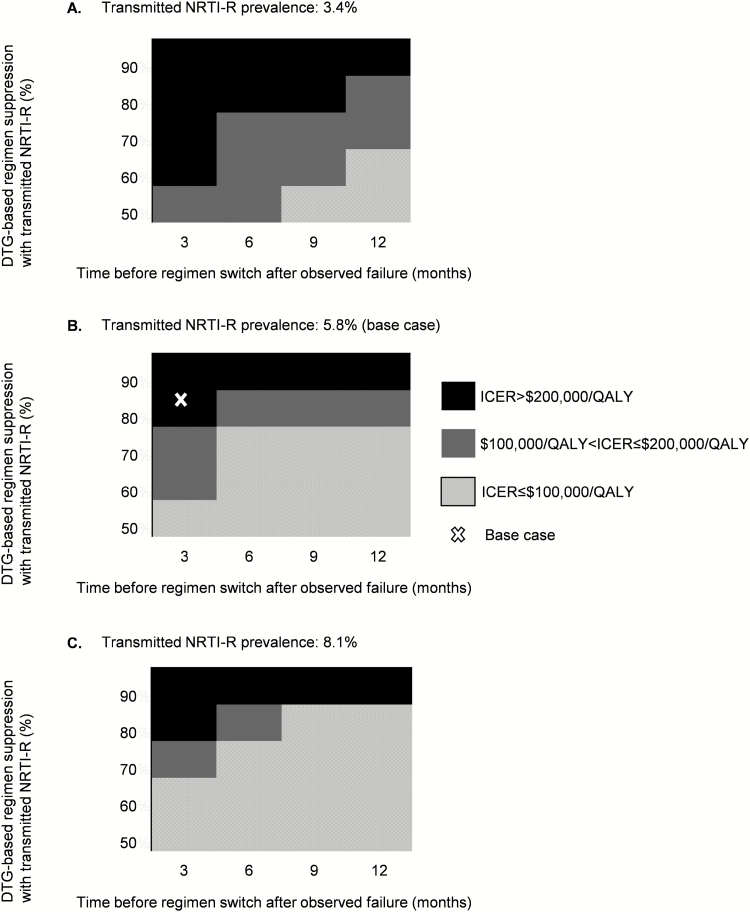Figure 3.
Baseline genotype is cost-effective compared to no baseline genotype only at high prevalence of transmitted drug resistance, low likelihood of suppressing NRTI-R virus with DTG-based regimen, and prolonged time to switch. On the horizontal axis, we varied the number of months individuals were observed on a failing antiretroviral therapy regimen before switching to a new regimen (3–12 months). On the vertical axis, we varied the likelihood of suppressing transmitted NRTI-R with a DTG-based regimen (50%–90%). Each panel represents a different prevalence of transmitted NRTI-R virus, as follows: 3.4% (A), base case 5.8% (B), and 8.1% (C). The white X indicates the base case in (B). Baseline genotype was cost-effective compared to no baseline genotype at the base case transmitted NRTI-R only when DTG-based regimen suppression was ≤50% with NRTI-R or when DTG-based regimen suppression was ≤70% and individuals spent at least 6 months observed on the failing regimen before switching to a new regimen. Abbreviations: DTG, dolutegravir; ICER, incremental cost-effectiveness ratio; NRTI-R, nucleoside reverse transcriptase inhibitors resistance; QALY, quality-adjusted life-years.

